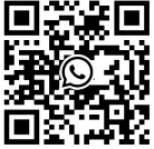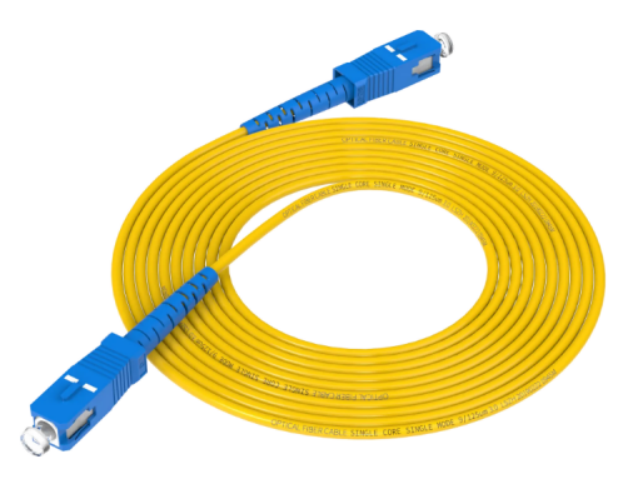The web worker looks over here! Fiber Jumper Concepts, Principles, and Processes Throughout Once
Hey! Brothers!
Do net workers, who did not for that messy fiber optic head bigger?Looking like a plate silk hole like jump fiber, is not always want to pull them all to re-come?
Don't panic, let's talk about fiber hopping today. From concept to principle to process, let you get it straight and let your network wiring say goodbye to chaos. Beauty and practicality are both on the line!
For more information, please scan the WhatsApp QR code below to contact customer service.

01 What is skipping a rope?
Jumping the fiber, to put it bluntly, is to connect the fiber and connect the two ends of the network equipment. There are three common scenarios:
1. Fiber optic jumping between devices and devices.

2. Fiber hopping between the device and the ODF.
3. Fiber optic jumping between fiber optic cable rack and fiber optic cabling.
( 1 ) Optical fiber classification know how much
1. Classified by fiber optic interface
FC type : metal sleeve strengthening , screw fastening , commonly used on ODF side , a frequent visitor on the distribution frame .
Type SC : Rectangular housing , plug-in and pull-out latch type fastening . Common on routers and switches . Easy to connect to GBIC optical modules .
ST type : round shell , screw fastening , often used in fiber distribution frame , 10Base-F connection is often seen in it .
LC type : modular plug-in ( RJ ) latch mechanism , connect SFP module , router commonly used , small and flexible .
2. Classified by fiber hop length
Common 1.5m, 2m, 3m, 5m, 10m, 15m, 20m these specifications, can also be customized according to the needs, as long as you want (as long as the manufacturer can do).
3. Classified by fiber optic uses
The LC interface often engages in the connection between devices.
The FC interface loves and the ODF connects the distal core partner.
The SC interface appears frequently in the connection of ODF and equipment .
02 What principles does a trapeze follow?
The equipment interface is highly density, there are more hops, there is no principle in the early stage, a proper spider network in the later stage, and operation can drive people crazy! Therefore, these principles must be kept in mind:
1. The jumper operation should make the ODF rack neat , beautiful , easy to operate and occupy less space in the optical cross-connect and integrated box .
2. Jump fiber length should be controlled in 500mm long range, too long too short are not good.
3. Do not use a skip that is not long enough, and do not use plates to connect two sections of skip. The wear and tear is high and unstable.
4. The radius of curvature of the fiber should be more than 400mm. Don't break the fiber.
5. When jumping the fiber, one end first connects the device port, the other end walks the fiber from the wiring slot, pulls out the fiber rack, puts the excess fiber in a circle on the fiber rack and wraps it with a binding band to propel it, and then connects the other end to the device or ODF rack.
6. Fiber walking also has these requirements:
On the line of the optical fiber, from the outside of the ODF frame down the line, select the appropriate amount of spare fiber disc fiber column, the inside of the fiber up, the horizontal walk ODM lower edge, vertical to the corresponding terminal.
A hop can only go once along the external side and once within the ODF frame, walk a column of fibers, do not entangle, cross or hang between multiple column of fiber, and no fibers can be entangled on the edges of each column of fiber.
Depending on the situation on the scene, the jump fibres were first organized and then tied as prescribed.
All jump fiber must be placed inside the ODF frame, and it is strictly prohibited to put and fly the line outside the frame, and do not make it like a flying fairy.
The excessively long skipping filament used in emergency situations should be kept on the inside disk in accordance with the rules, so that it does not affect the skipping threads in the future.
7. When spinning a fiber, the same fiber is crossed and tangled between multiple fiber racks, and it becomes confused around itself.
8. When crossing the optical fiber in the cabinet, use a casing to protect it when crossing, and those with cable racks are placed in the cable rack. Don't let the o fiber get hurt by squeezing other cables.
9. Don't pull the fiber optic connection too tightly, don't make the junction a straight angle, and treat it gently.
10. All optical fibers must be placed in the wiring slot. It is strictly forbidden to place or fly wires outside the rack. We must abide by the rules.
11. Do not use the optical fiber connector to connect two sections of optical fiber, otherwise the attenuation is big, the net transmission is affected.
12. When inserting fiber, clean the end surface (connector) of fiber optics, don't touch it directly with your hands, and don't let the end surface touch things in the production environment, be a little hygienic.
13. When connecting the optical fiber, insert the optical interface vertically, do not insert it diagonally, insert it in place, and the SC and LC connectors will hear the sound of popping.
14. Don't pull the fiber very hard, it will easily crack the fiber and the connection head.
15. Don't twist the fiber optic wire, and stick the fiber along the naturally relaxed state, so that the network is stable.
03 How does the hopping process go?
Once you understand the concepts and principles, you can start to spread and distribute fiber optics. There are six steps, step by step:

(1) Preparation
Prepare tools, materials, and glossary information according to business requirements:
Tools : Marker pen , tube sleeve , label paper , oil pen , notebook , pliers , electrical tape , these little friends have to be ready .
Materials : Optical fiber , Optical module , Optical fiber binding tape ( nylon adhesive tape ) , quantity , type , length according to demand , what is missing , what is missing .
Plate: understand the room, equipment, ODF location and other information and record, have a clear idea to do a good job。It is also possible to prepare a variety of color zha tie, distinguish different uses jump fiber, later good recognition.
(2) Choice of fiber optics
According to the type and length of the interface, choose the appropriate optical fiber, and what the flanges on the interface, spectrometer, and fiber separator are, we choose the corresponding optical fibre.
Fiber length margin control within 50cm, not too long too short, suitable to use.
(3) Dissemination of optical fiber
Following the principles of hopscotch:
1. Confirm the location of the interface, spectrometer, or fiber separator. Don't look in the wrong place.
2. Remove the optical fiber cap from the optical fiber connector.
3. Plug the optical fiber one end connector into the corresponding device interface position and it is plugged correctly.
4. The fiber optics are laid along the line area to the corresponding equipment, and do not go around blindly.
5. Plug the other end of the fiber optic connector into the corresponding device interface position, both ends are plugged, and the task is half done.
(4) Paste labels
In order to facilitate maintenance, each fiber ends are 1cm-2cm away from the connector, each with a label:
The tags must be machine-punched, not hand-written, neat and attractive.
When placing multiple fibers at the same time, mark them with a marker first to avoid confusion, and post a label after placing them.
Both ends of the fiber must be labeled, the direction of the label is uniform, the head of the vertical cable label is generally left, and the horizontal cable is generally down, so that it is perfectly ordered to be beautiful.
(5) Bundled fiber optics
Using optical fiber straps to tie optical fibres at intervals:
When tying into a bundle, the spacing is 20cm, not too loose and too tight.
When turning, the bandage is tied on both sides of the corner, the bending radius of the 2mm fiber is not less than 30mm, and the 3mm is not less than 40mm to protect the fiber.
Tie the hair to the fibers, don't touch the hook, straighten the fibers first and tie the fibers again, loose it properly, and don't let the fibers cross "fight."
(6) Final work
When the leap is over, the end counts:
Tool arrangement : Put the used tools back to their designated places so that they can be easily found next time .
Recycle the leftovers : Recycle the leftovers . Don 't waste them .
Clean up : sweep the installation garbage clean , the environment is clean and the mood is good .
Complete the installation report : Give the site installation report to the person in charge . If the site works normally , tell the operation and maintenance personnel to jump the fiber and finish it .
Correct the hopping of fibers, make the cable beautiful and maintained, find fibers and locate faults easily, simply once and for all! Gentlemen, what kind of messy scenes have you encountered at work and what are some tricks to solve them? Feel free to share!
For more Fiber resources, follow the Facebook account & youtube account: Thinkmo Dumps


